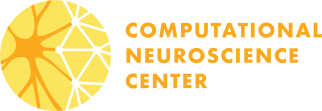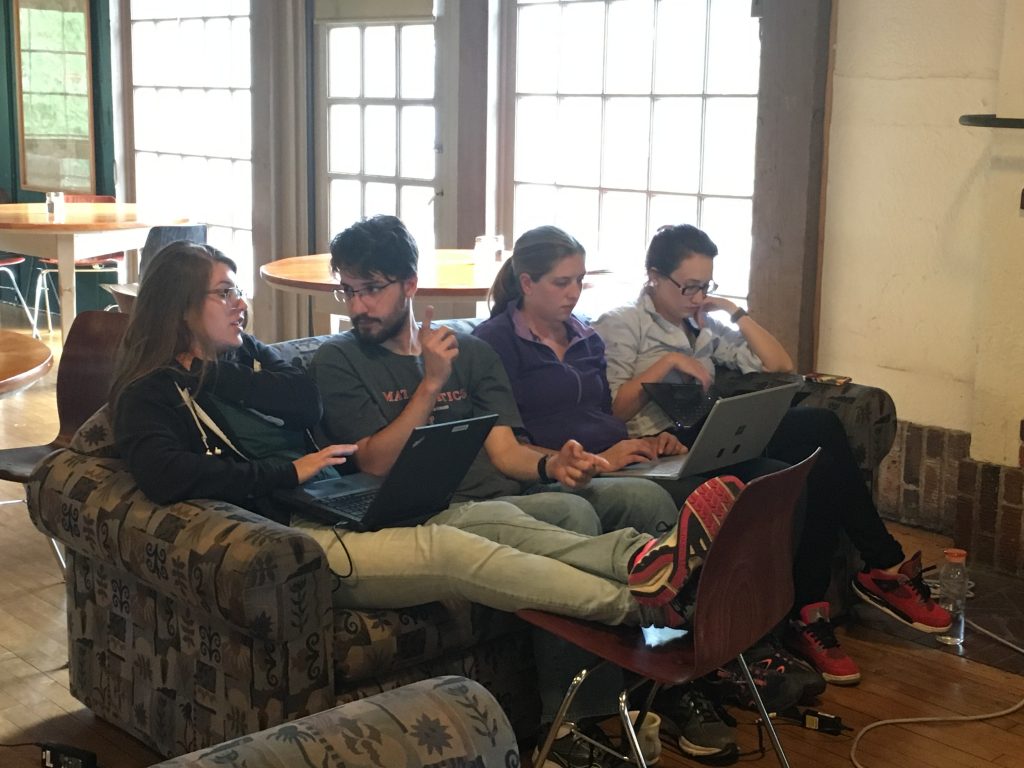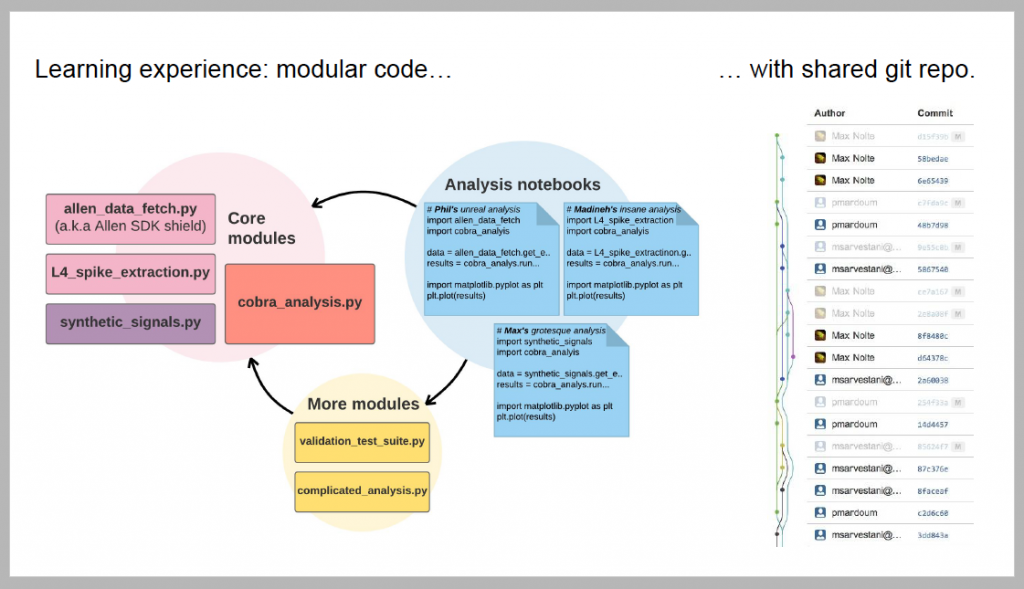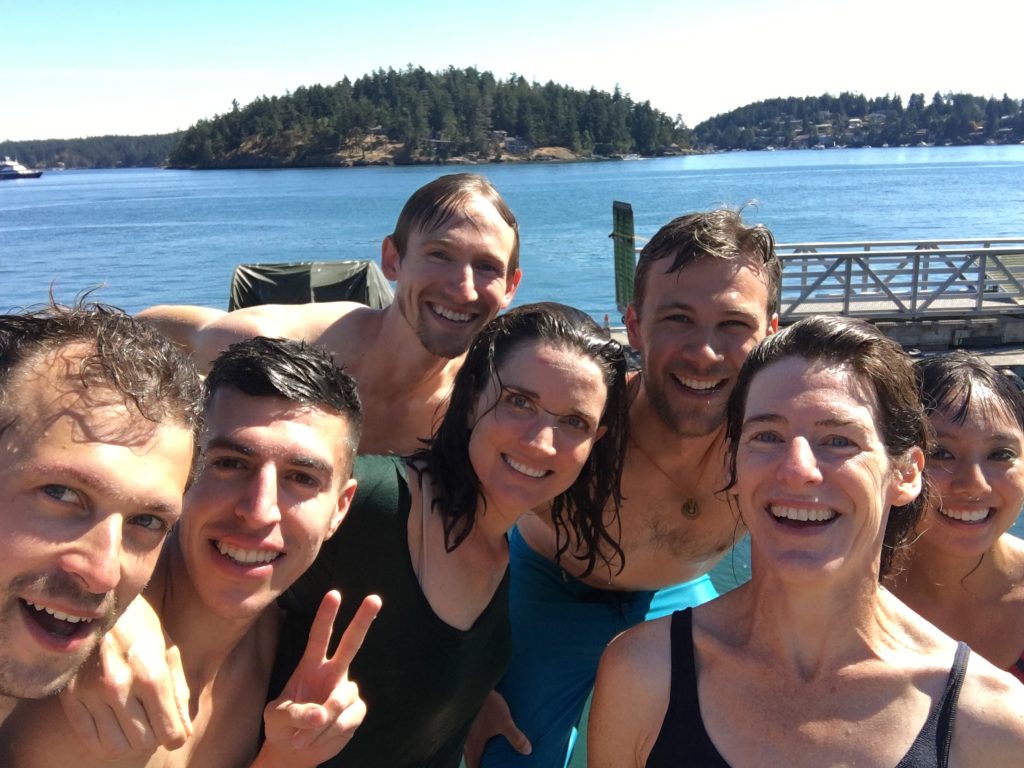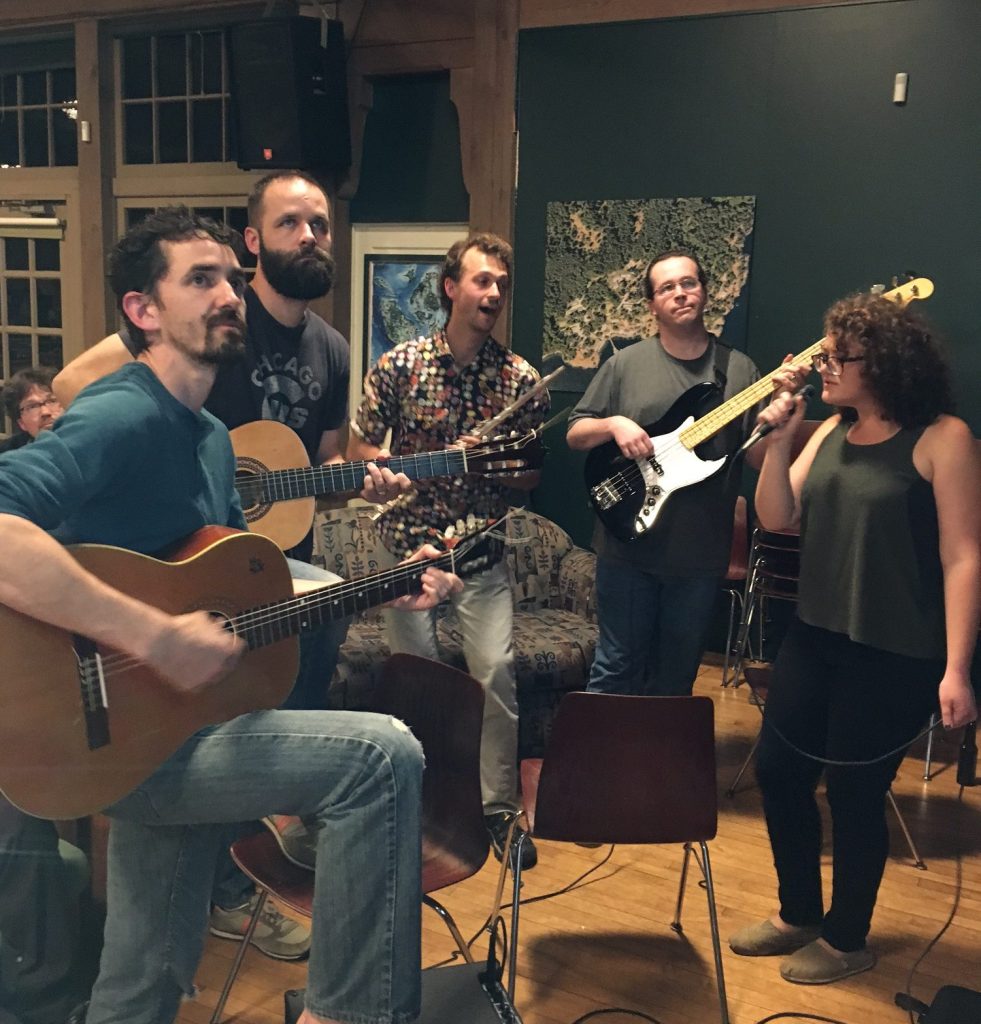A new method to segment brain regions by their connectivity.. examining how particular cell types participate in the cortical “chorale”.. new open-source tools to help visualize how brain regions are connected.. a data-driven model to capture how information is transformed between layers in visual cortex: these are a sampling of some of the student team projects presented on the final day of the 2016 Workshop on the Dynamic Brain.
Held at UW’s beautiful Friday Harbor campus in the San Juan Islands, this course is a joint endeavour of the Allen Institute for Brain Science and the University of Washington’s Computational Neuroscience program. With a teaching program focused on understanding cortical function, and centered on the open-access data sets and tools of the Allen Institute, students engage in an intense, hands-on learning experience that ranges from basics of neuroanatomy to theoretical models of brain function. Tutorials and problem-solving exercises working from Python notebooks get everyone up to speed and quickly engaged in developing original projects combining modeling and analyses of the Allen’s rich, unique and carefully curated data sets—including detailed connectivity maps, a wide sampling of functional properties of different cell types, and the newly released Allen Brain Observatory, recordings from many neurons while an animal is engaged in a variety of different perceptual tasks. The students, stimulated by a diverse set of lectures, are able to pose an array of novel questions that can be explored for the first time in this data.
The progress made by course participants in these projects in two short weeks is stunning. Several factors make it possible. The course began with a Python bootcamp held at UW’s Data Sciences Studio, so that everyone hit the ground running with AIBS’ Python-based interfaces. Upon arriving at Friday Harbor, students, TAs and faculty spend all working hours together in an airy and hospitable dining hall overlooking the sea, where the buzz of activity continues into the small hours. AIBS staff and our TAs and faculty invest an enormous amount of effort preparing teaching resources for the class and are constantly on hand to assist students with accessing and manipulating data and in brainstorming project ideas. Lectures are followed up with hands-on tutorials so that students are supported while working through structured problems before proposing and launching into projects. Students bring their talent, energy and enthusiasm, and share their diverse expertise through teamwork.

Pat Churchland, Christof Koch and Blaise Aguera y Arcas field questions and discussion on consciousness in man, animals and machines.
Along with presentations from locals from UW and the Allen, lectures also highlighted forefront work being done in labs around the country; Anne Churchland (Cold Spring Harbor Labs) showed how multiple sources of information are represented and processed in the brain during complex decisions, and Rafael Yuste (Columbia) described cutting-edge optical technologies that allow one to “write in” new patterns of brain activity. Jeremy Freeman (Janelia) led an electrifying discussion and workshop on coding practices for collaborative and reproducible science that students immediately incorporated into their project teamwork. In an extended Friday night thoughtfest, philosopher Pat Churchland described the neurological origins of ethics and morality, and Google engineer Blaise Aguera y Arcas discussed developments in artificial intelligence, relationships with biological perception and creativity, and the pending social implications of AI. Christof Koch then joined the speakers in a panel and lively group discussion about machines, consciousness and ethics.
Students are going home with new and solid skills—Python coding, data analysis and modeling tools, familiarity with the datasets and atlases, and ideas and work practices that they can immediately inject into their research at home. But the most exciting aspect of the course is that students have access to TB upon TB of data—brain images and neuronal activity patterns—never before analyzed and seen by a human eye. The projects vividly demonstrated the new insights waiting to be extracted from the Allen Institute resources.
All participants are deeply grateful to Paul Allen for funding the course, and to the Simons Foundation for additional support.
